Wildlife photographers often want to make photos of groups of animals. When using long zoom lenses, this requires changes in aperture to ensure that all animals in the group are in focus, as the focal plane of telephoto lenses can often be quite shallow.
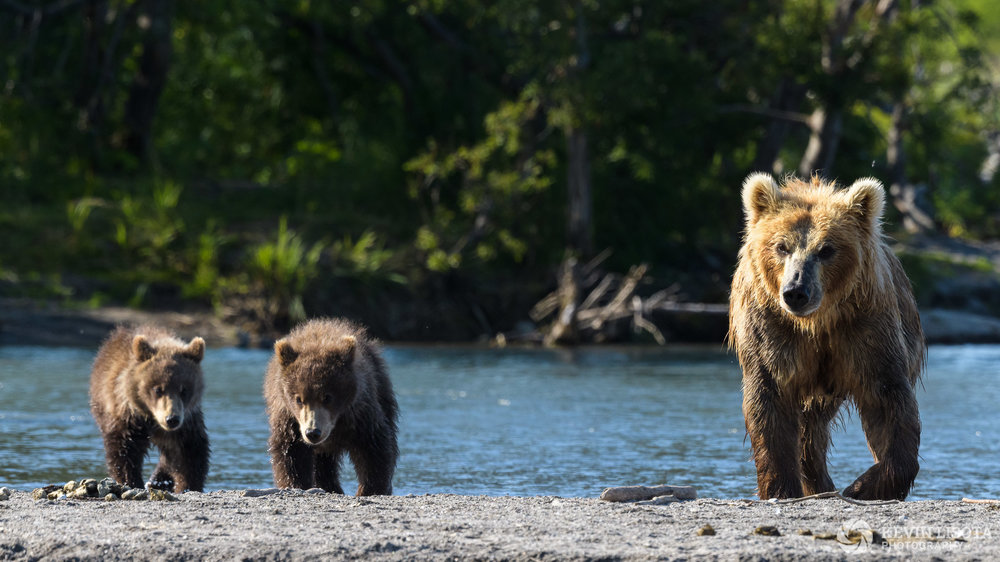
Aperture of f/9 not sufficient to have bear cub on the far left in focus. Nikon D850, f/9, 500 mm, subject distance 50 m, DoF 5 m
I often make this mistake during wildlife photo shoots, capturing a group of animals that all appear sharp on the small camera screen. Once home and viewing the image on a larger computer monitor, I am sometimes disappointed that animals in the back of the group aren’t totally sharp. Understanding depth of field and aperture is the way to fix this.
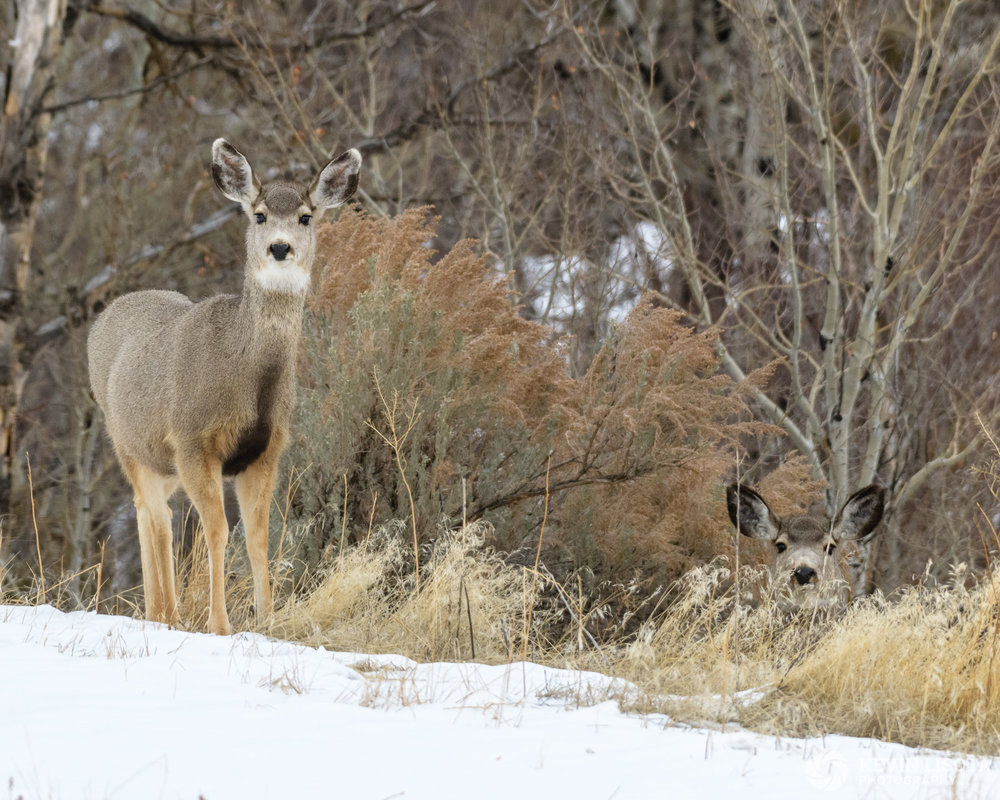
Aperture of f/5.6 not enough to ensure that the deer hiding on the right is tack sharp. Nikon D850, f/5.6, 250 mm, subject distance 30 m, DoF 4.8 m
Wide open aperture for wildlife photography
A very common setting for shooting wildlife photos is to take photos at wide open apertures. This means using the widest aperture that your lens supports, often f/2.8, f/4 or f/5.6.
Using a wide aperture with a long zoom lens can have many advantages for wildlife. Wide apertures allow the subject to be isolated in the photo, blurring the background with nice bokeh and highlighting the subject of the photograph.
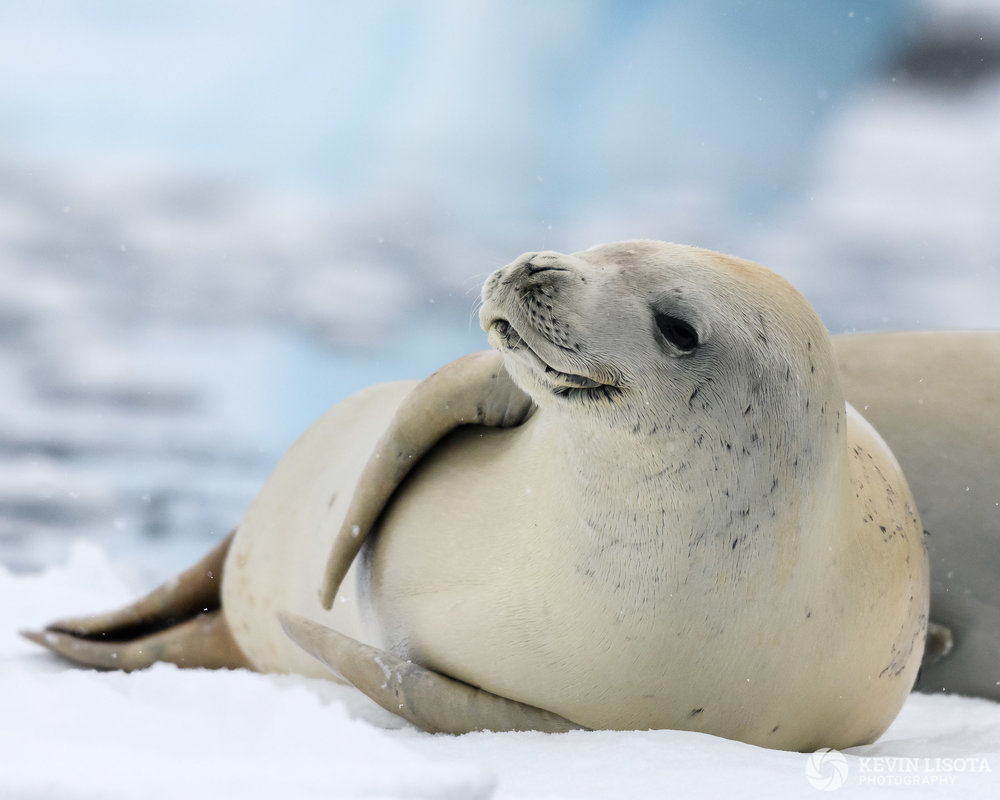
Aperture of f/5.6 allows the head of the seal to be in focus with nicely blurred background. Nikon D850, f/5.6, 340 mm, subject distance 18 m, DOF 1 m
Since you can’t control the motion of animals, you are often left with busy or uninteresting backgrounds. Blurring out the background can make for a more compelling photo.
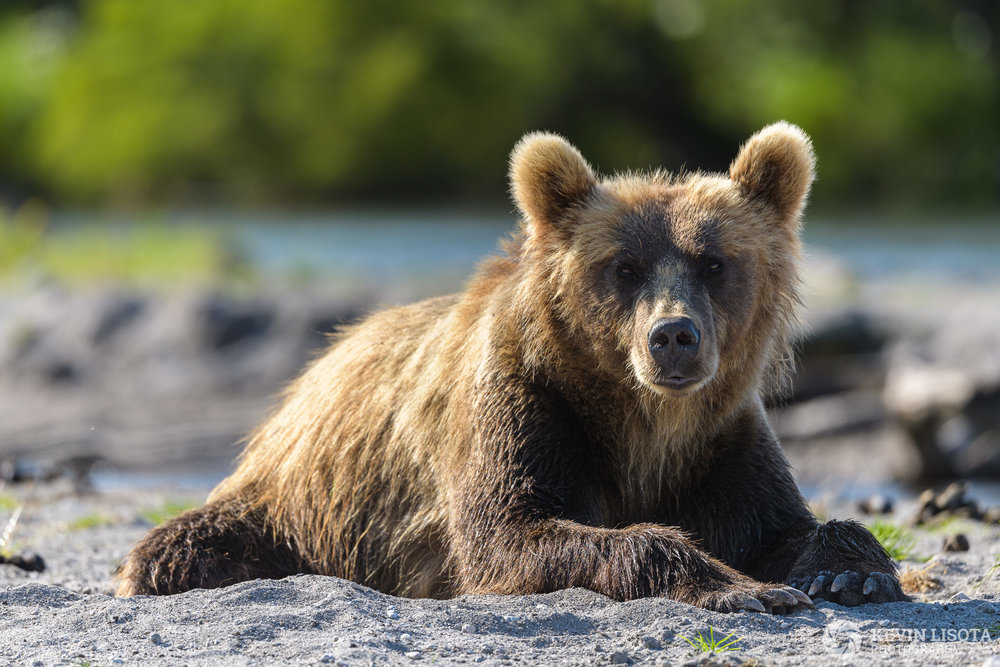
At f/5.6, only the head of the bear is in focus, and the busy background is nicely blurred. Nikon D850, f/5.6, 500 mm, subject distance 20 m, DoF 50 cm
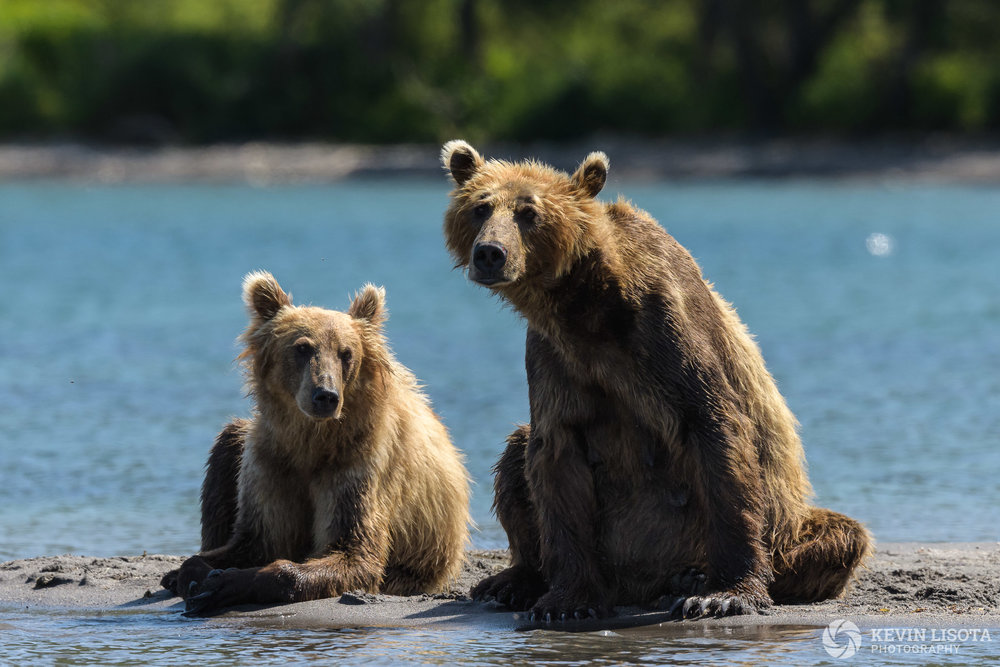
Aperture of f/7.1 used to keep both bears in focus. Nikon D850, f/7.1, 500 mm, subject distance 60 m, DoF 6 m
Understanding depth of field at various focal lengths and aperture settings
Depth of field (DoF) is the the distance between the nearest and farthest points in an image that appears sharp. Depth of field is affected by a few factors: focal length of lens, aperture and distance to subject.
As the focal length of a lens is increased, the depth of field becomes shallower. Wider apertures also mean a shallower depth of field. The depth of field also becomes shallower as the distance to your subject decreases.
The ultimate sharpness of your photos is also determined by the sensor size, final resolution of the image and the viewing distance of the final photograph. A group of animals that looks sharp at 800 px wide on a computer monitor might appear soft and out-of-focus on a large 24″ x 36″ print, for example.
The math behind calculating depth-of-field can be complex and impractical in the field unless you have tools to help with the calculation.
One such tool is an app called PhotoPills. This app offers a wide array of tools for photographers and can be a quick way to calculate complex things like depth of field and hyperfocal distance. Let’s use PhotoPills to calculate some depth of field examples.
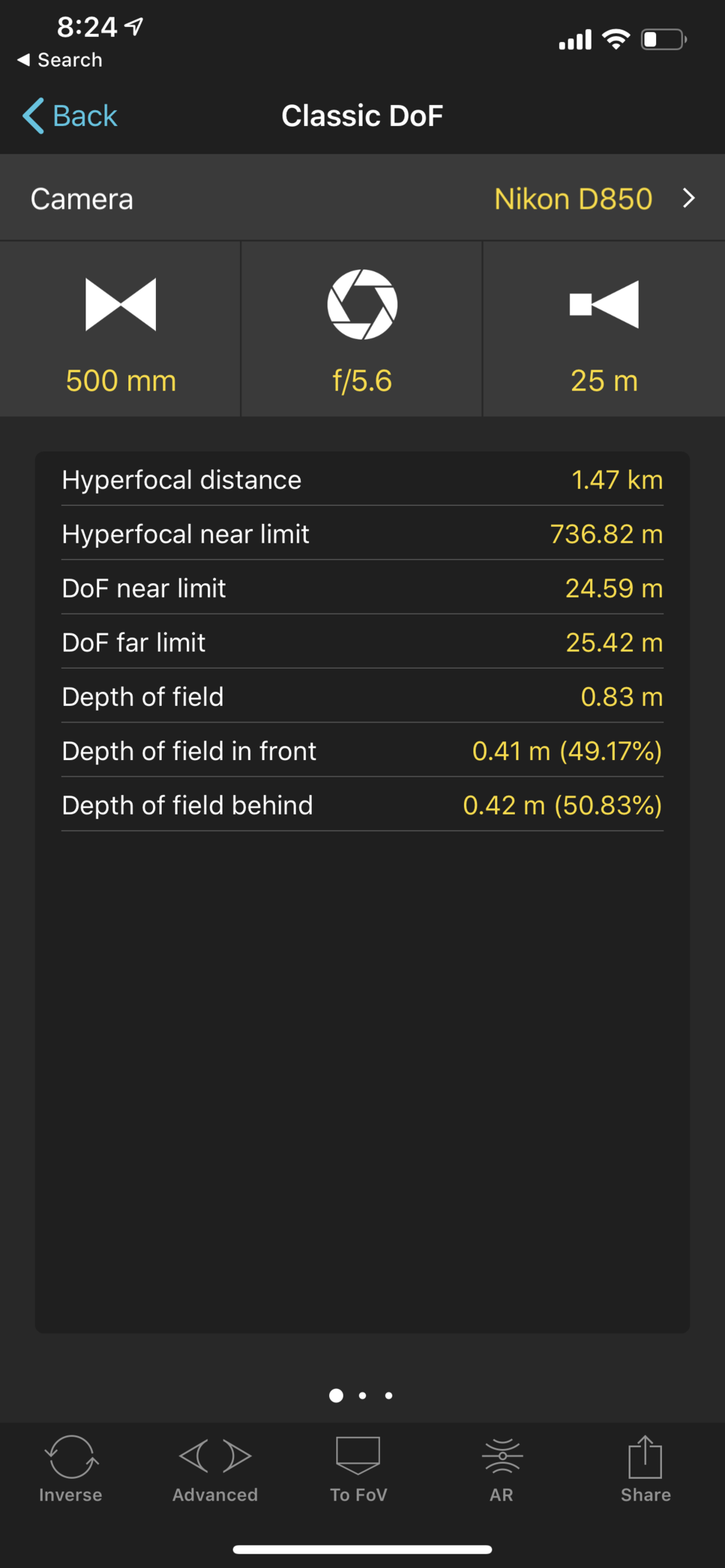
PhotoPills depth of field calculator allows you to input camera model, focal length, aperture and subject distance to calculate depth of field
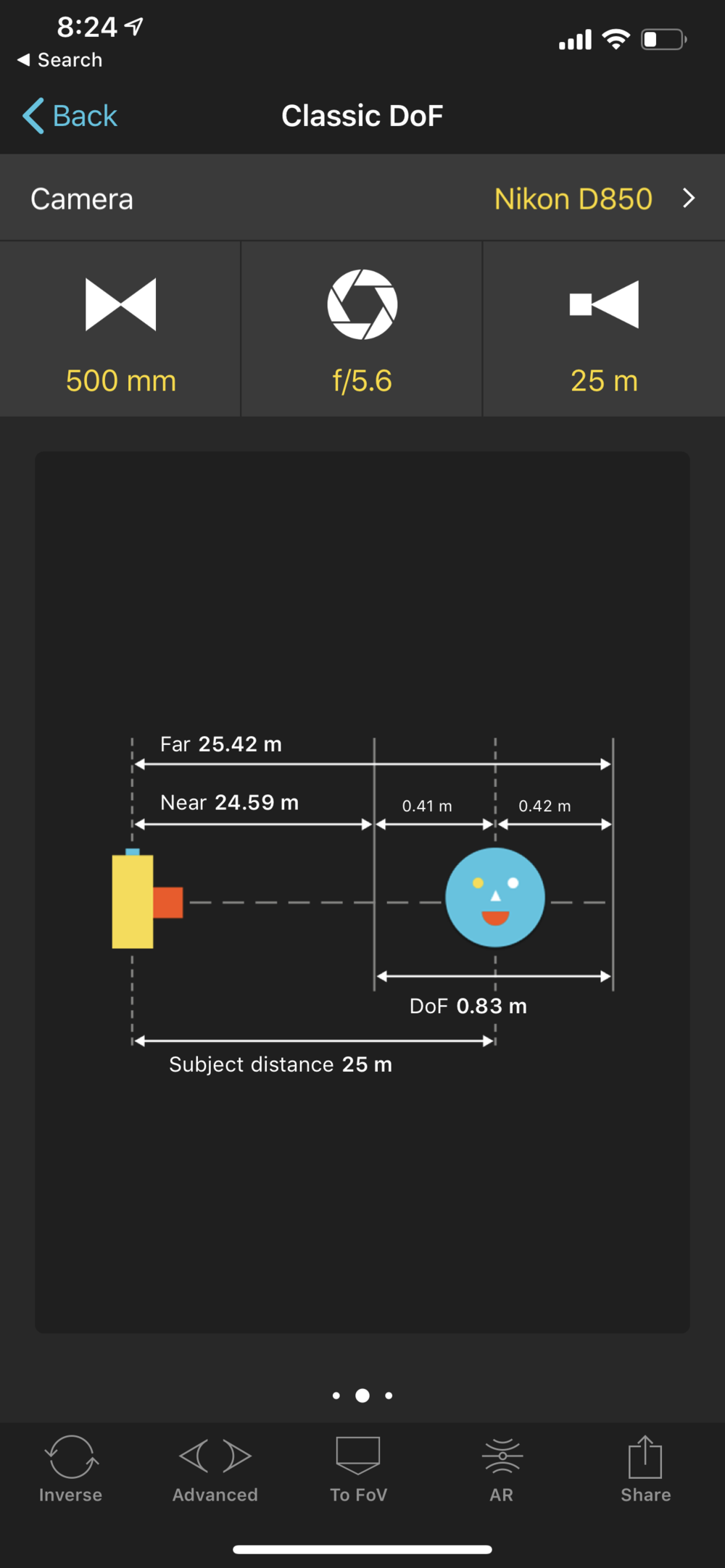
PhotoPills depth of field calculator shows both the near and far limit of depth of field based on focal length, aperture and subject distance.
In this example, I am using a full-frame camera at various focal lengths, apertures and subject distances.
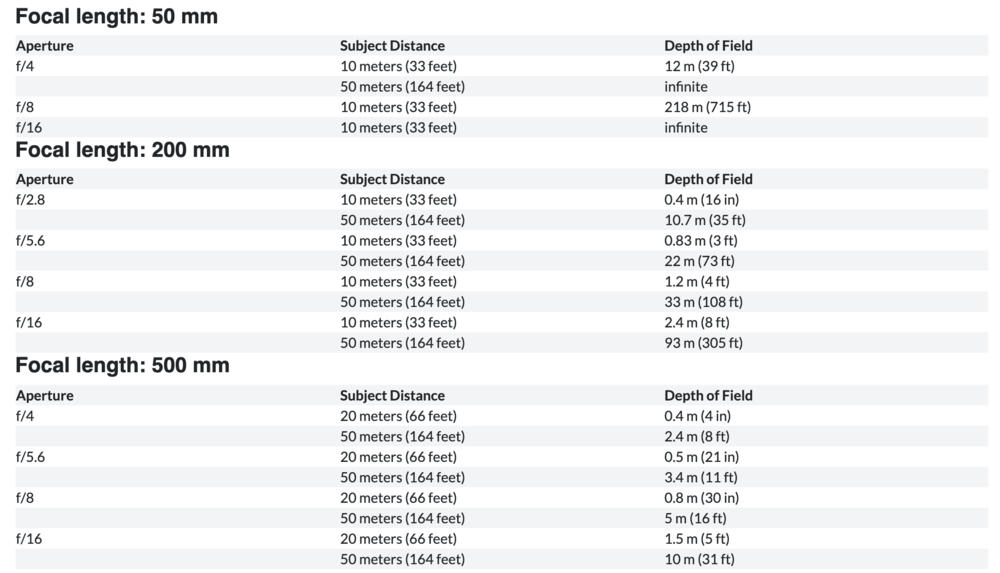
Obviously the combinations of subject distance, focal length and aperture are limitless, and these tables are just a few samples to illustrate the key points. I encourage photographers to use an app like PhotoPills to explore the various depth of field for their own lenses at varying subject distances.
With long focal length zoom lenses, the depth of field when subjects are close can be quite shallow, measured in inches at wide apertures. This can be problematic for groups of animals, and is also problematic for larger animals if the depth of their snout or head exceeds your depth of field.
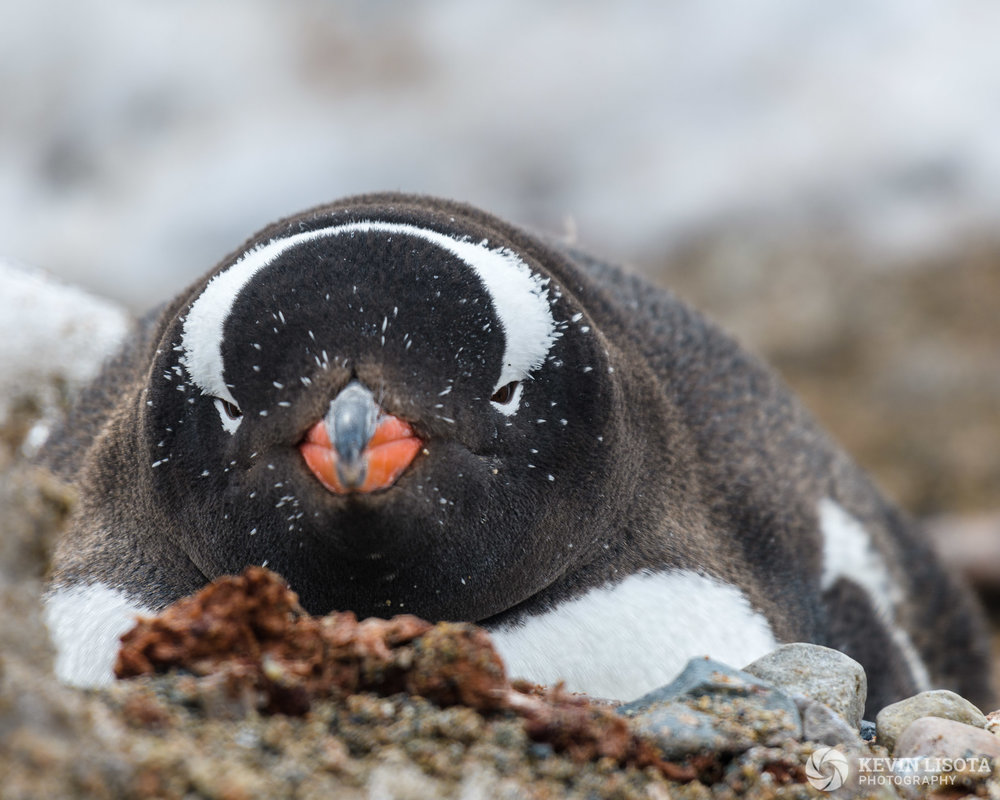
At very close range, f/5.6 is only sufficient to focus on the eyes of the penguin. Nikon D850, f/5.6, 500mm, subject distance 5 m, DoF 3 cm
Also remember that the value for depth of field extends in front and behind the subject that you have focused on. For example, if you focus on an animal’s eyes with a depth of field of 1 m, the sharp area of your photo will extend 0.5 m in front and 0.5 m behind the eye.
To achieve deeper depth of field to get a group of animals in focus, much smaller apertures are going to be required, as it is often impossible to change the distance between you and the subject when shooting wildlife.
Aperture for photographing large animals
When photographing small single animals, wide apertures will generally lead to the entire animal being in focus. This can also be true when shooting a side profile of larger animals.
Large single animals like bears, rams, caribou, bison, lions or hippos can require smaller apertures to achieve focus on the entire face of the animal. Even smaller apertures are needed if you are looking for the length of the animal to be in focus as it approaches directly towards you at a perpendicular angle.
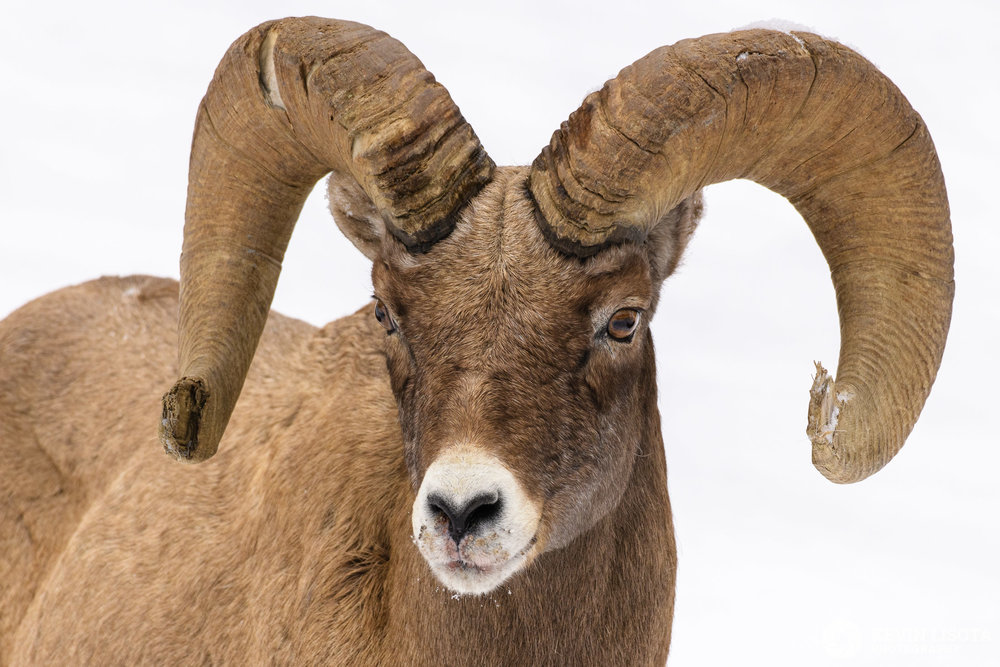
Aperture of f/7.1 used to get the snout and horns of the ram in focus. Nikon D850, f/7.1, 500mm, subject distance 15 m, DoF 37 cm
For example, if you are photographing the face of a bear at 500mm that is 13 m away from you, an aperture of f/5.6 is going to result in a depth of field of only 22 cm. This won’t be enough to have both the eyes and snout in focus, so a smaller aperture is going to be required to get its entire face in focus.
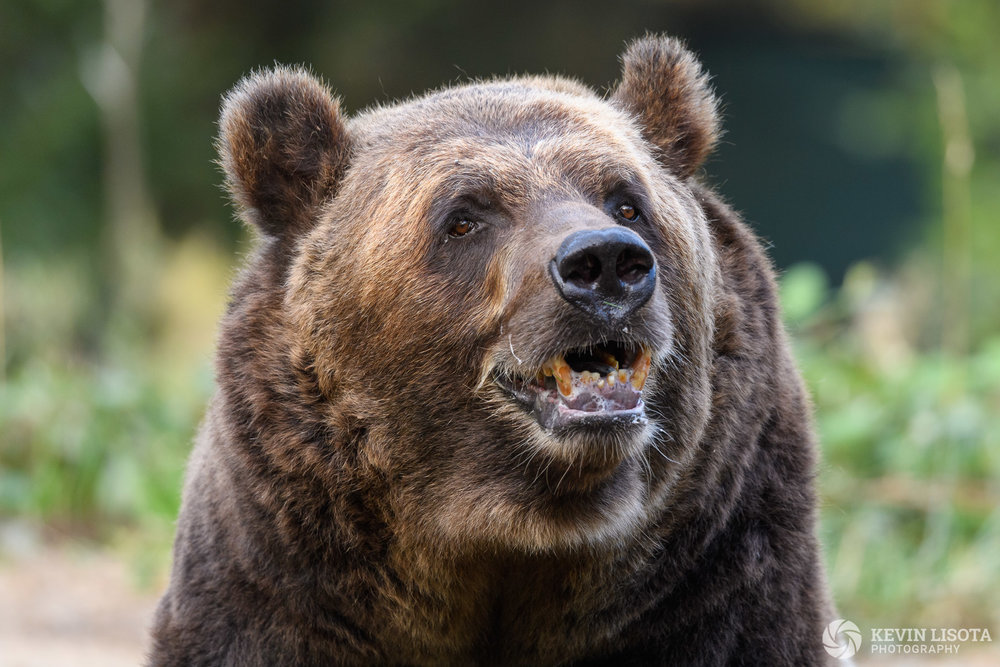
At f/5.6, the bear’s eyes and face are in focus, but the snout is not. Nikon D5, f/5.6, 500mm, subject distance 13 m, DoF 22 cm
Aperture for photographing groups of animals
Wildlife photos of groups of animals can be quite compelling. Showing the interaction of mother and cubs or highlighting group behaviors and interaction often makes for high interest photos.
However, if you are trying to ensure the entire group of animals is in focus, you have to make the aperture small enough to achieve the proper depth of field that captures the entire group of animals.
Sometimes I make a creative decision that the animals in the back of the shot can be blurred, in which case I leave the aperture at or near its widest setting.
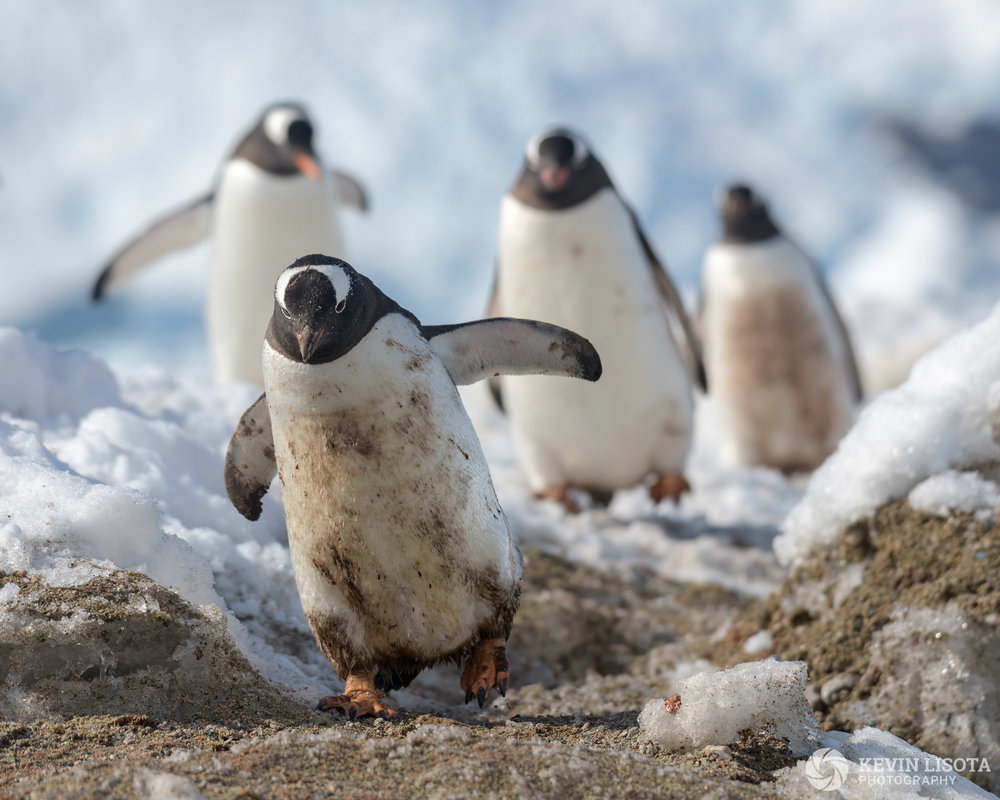
Penguins in the back intentionally blurred using aperture of f/5.6. Nikon D850, f/5.6, 260mm, subject distance 8m, DoF 83 cm
In instances when I want make a group of 2 or more animals in focus, I make my apertures smaller and smaller, going from f/4 up to f/7.1, f/8, f/11 or f/16 as needed.
Doing real-time calculations of depth of field is impossible when shooting wildlife action. It can also be difficult to gauge the depth of a group of animals from front to back. Are they 0.5 m apart? 2 m apart? There isn’t time to figure this out with any degree of certainty.
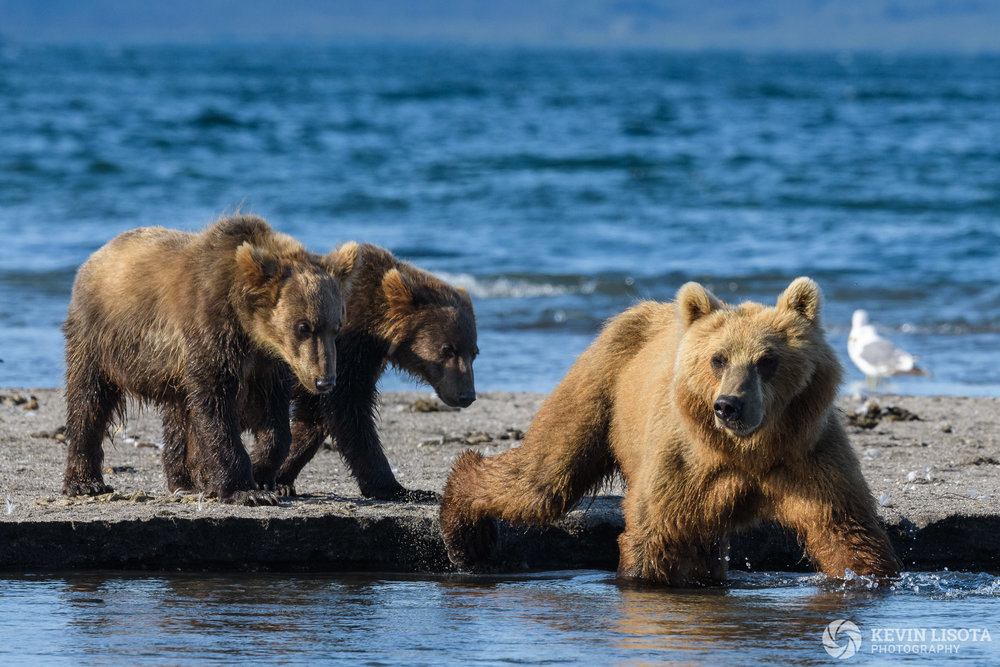
Aperture of f/13 required to ensure the bear sow and both cubs are all in focus. Nikon D850, f/13, 500mm, subject distance 40 m, DoF 4.8 m
When I am shooting groups of animals, I adjust my aperture as I shoot, using a few basic observations. First, how many animals are there in the group? More animals generally means they are staggered at greater depth and will require smaller apertures.
Second, is the group of animals lined up in a straight line, or do I perceive them to be staggered at various depths? The deeper they are staggered, the smaller I set my aperture.
Third, how close are the animals, and how long of a zoom lens am I using? If I am shooting using a relatively wide-angle lens, say my 24-70 mm, depth of field is usually not an issue. But if I am using a 500 mm lens and the animals are only 20 m away, I know that I need quite small apertures to get a group of animals in focus.
Based on these factors, I will change my aperture to smaller settings. f/7.1 or f/8 with a smaller group of smaller amount of stagger in their positions. f/9, f/11 or f/13 when there are more animals and more stagger in their positions. I’ll go as high as f/16 or f/18 for a group that spans a significant depth or when they are particularly close when using a long zoom lens.
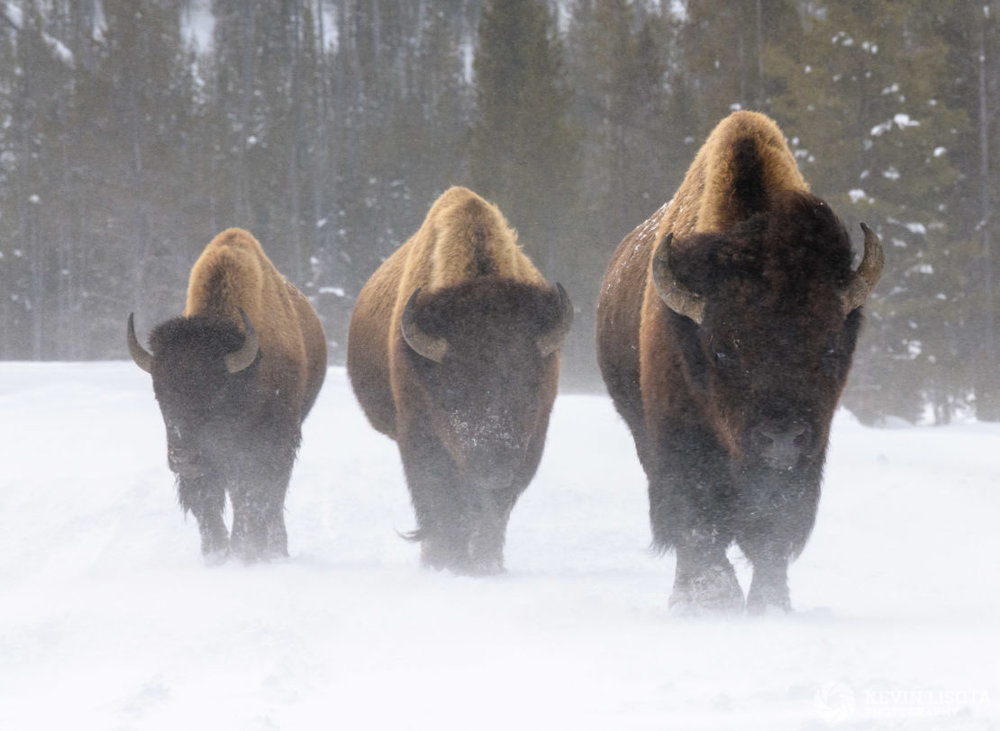
Deep stagger of bison required an aperture of f/18. Nikon D850, f/18, 340mm
If a group of animals is stationary, I will often take a series of photos in quick succession using smaller and smaller apertures. Once I download to the computer, I can choose which setting has the optimal sharpness.
If I am photographing an action shot of a group of animals, I do my best to make my aperture smaller if I want them all in focus.
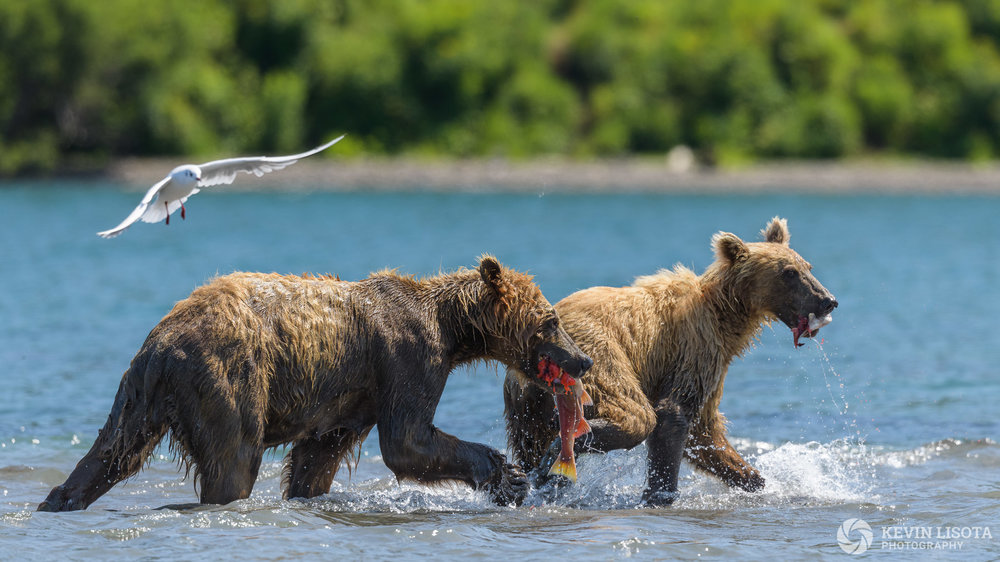
Aperture of f/6.3 to account for the staggered depth of the bears. The gull is not sharp at this aperture. Nikon D850, f/6.3, 500 mm, subject distance 50 m, DoF 3.8 m
Aperture is my primary creative decision when shooting wildlife
When shooting wildlife, I will have a shutter speed set based on the particular animals that I am shooting and the speed of their action. That may be 1/320-1/500 sec for relatively stationary animals, 1/1000 – 1/1600 sec for faster moving action and 1/2000-1/2500 sec for very fast action like birds in flight.
I usually let the camera decide on ISO using Auto ISO to remove the need for me to think about this setting.
My primary creative decision when shooting wildlife, apart from framing and composition, is choosing the aperture for the photo. Sometimes that will be wide open to isolate a single animal, but for groups of animals or large animals, I have to constantly remind myself to make my apertures smaller to maintain an adequate depth of field.
Article Written by Kevin Lisota
